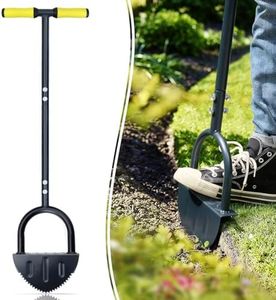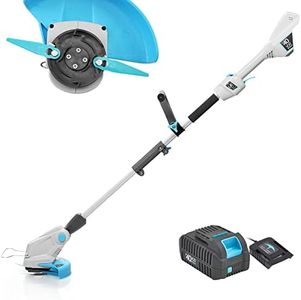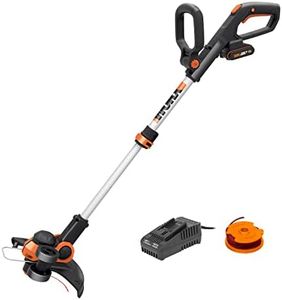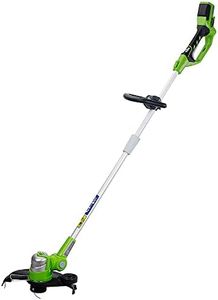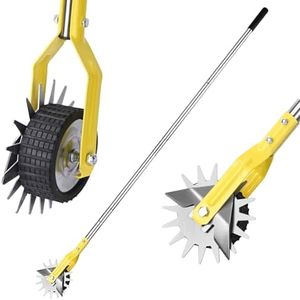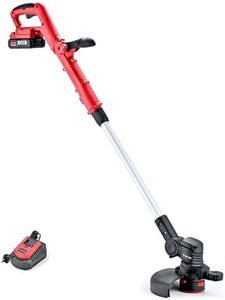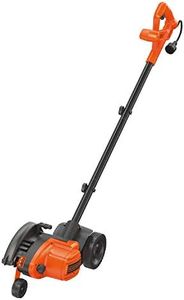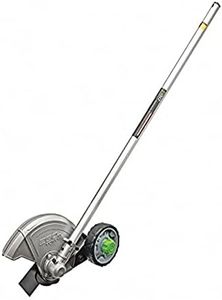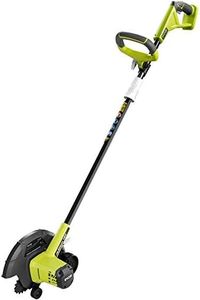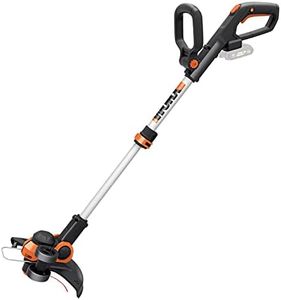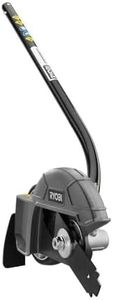We Use CookiesWe use cookies to enhance the security, performance,
functionality and for analytical and promotional activities. By continuing to browse this site you
are agreeing to our privacy policy
10 Best Lawn Edgers
From leading brands and best sellers available on the web.Buying Guide for the Best Lawn Edgers
Picking the right lawn edger involves understanding the differences in features and how they fit your yard’s needs. An edger helps create clean, crisp lines along driveways, sidewalks, and flower beds, giving your lawn a meticulous look. Consider the size of your yard, how much power you need, ease of use, and how comfortable you are with handling and maintenance. Prioritize what features matter most to your tasks—this will lead you to the ideal edger.Power SourceThe power source describes what runs the lawn edger, typically gas-powered, electric (corded), or battery-powered. Gas models tend to be the most powerful and are suited for larger properties or thick overgrowth but are noisier and need more upkeep. Corded electric are lighter and quieter, great for modest yards, but you’ll need an extension cord and nearby outlet. Battery-powered, or cordless, offer good mobility and little maintenance, ideal if you have a small to medium yard and want freedom from cords. Your choice should be based on your yard size and how much convenience versus power you need.
Cutting DepthCutting depth is how deep the blade can penetrate the ground. A deeper cut means a more pronounced edge, while a shallow cut gives just a slight trim. Many edgers allow you to adjust this depth. For basic lawn edges, a smaller depth might suffice, but if you want bold, well-defined borders or have tough soil, a deeper cut is better. Choose an adjustable-depth feature if you think you may want to switch up the look sometimes.
Blade Type and SizeThe blade is what does the cutting, and the type or size affects the way edges look. Fixed blades are common for basic edging, while some have a star or multi-point design for tougher, varied terrain. Larger blades can handle bigger jobs and overgrown edges but may be harder to control in tight spaces. Think about the type of edging you’ll be doing—neat, straight lines, or more detailed, curved beds—and match the blade type and size to it.
Adjustability and ComfortAdjustability refers to features like handle height and angle, and whether the shaft can telescope. This makes the tool more comfortable for users of different heights and reduces strain during use. If you’ll use the edger for longer periods or if several people in your household will share it, look for models with easy adjustability. Comfort is key to wanting to use your edger regularly and doing a thorough job.
WeightWeight is important for maneuverability and user fatigue, especially if your yard is large or involves a lot of edging. Lighter models are easier to handle for most users, good for quick jobs or those new to edging. Heavier tools might be necessary for tougher ground or more power, but can be tiring to use. Think about your strength and how long your typical edging sessions last—choose a weight you can manage comfortably.
Ease of MaintenanceEase of maintenance covers how much cleaning, blade changing, and general care the edger requires. Gas models usually need more upkeep (fuel, oil, cleaning carburetors), while electric or battery edgers need less—just keep them clean and sometimes sharpen or replace the blades. If you prefer a tool that’s quick to store and ready to use, a low-maintenance model will be a better match for you.
